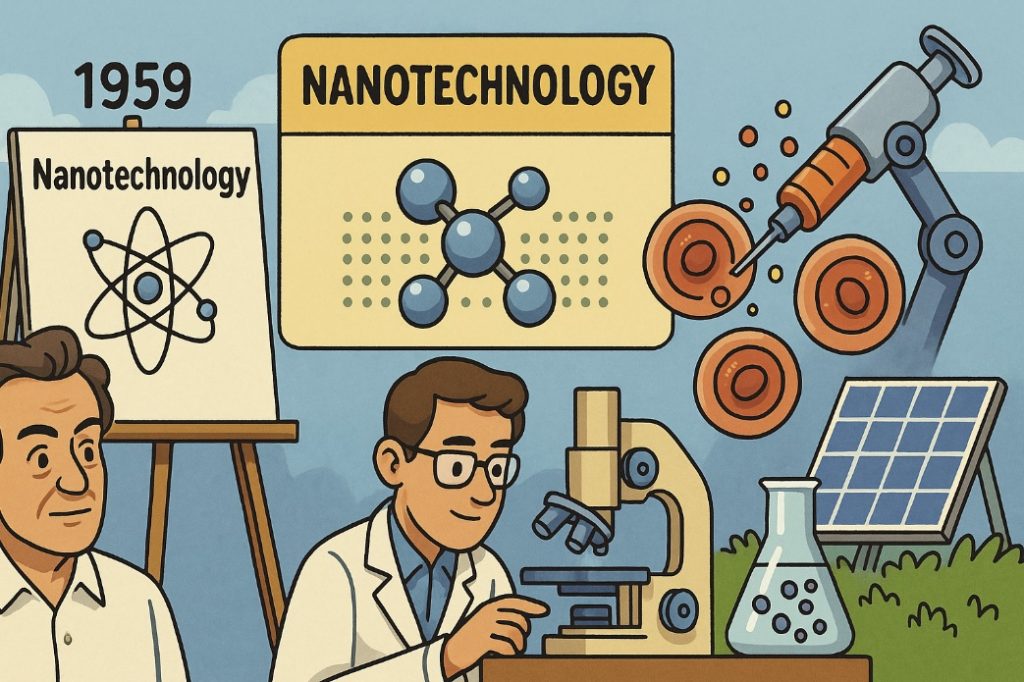Nanotechnology — the manipulation of matter at the atomic and molecular scale — has transformed from a theoretical idea into one of the most promising fields of modern science. Today, it powers advancements in medicine, electronics, energy, and even environmental cleanup.
But where did it all begin — and how far has it come?
A Brief History of Nanotechnology
The idea of nanotechnology was first introduced in 1959 by physicist Richard Feynman in his famous lecture “There’s Plenty of Room at the Bottom.” He envisioned the possibility of controlling individual atoms to create new materials.
The term “nanotechnology” was later coined by Japanese scientist Norio Taniguchi in 1974, but it wasn’t until the 1980s and 1990s that the field truly began to develop. The invention of the scanning tunneling microscope (STM) and atomic force microscope (AFM) allowed scientists to visualize and manipulate atoms for the first time.
By the early 2000s, governments began investing heavily in nanotech research. The U.S. National Nanotechnology Initiative (NNI), launched in 2001, marked the start of coordinated global efforts to advance nanoscience.
What Is Nanotechnology Today?
Nanotechnology deals with structures between 1 and 100 nanometers in size — a nanometer is one-billionth of a meter. At this scale, materials behave differently than they do in bulk: they can become stronger, lighter, more reactive, or even conduct electricity in new ways.
Modern nanotechnology is interdisciplinary, combining physics, chemistry, biology, and engineering to create tools and products at the nanoscale.
Applications in the Modern World
- Medicine: Targeted drug delivery, cancer therapy, diagnostic tools, and antimicrobial coatings
- Electronics: Smaller, faster, and more efficient semiconductors and memory devices
- Energy: Nanomaterials in solar panels, fuel cells, and batteries increase efficiency
- Environment: Nanotech is used to clean water, capture pollutants, and degrade harmful chemicals
- Textiles and materials: Stain-resistant fabrics, self-healing coatings, and lightweight composites
Challenges and Ethical Considerations
Despite its potential, nanotechnology raises important concerns:
- Toxicity: Some nanoparticles may pose risks to human health and the environment
- Regulation: There are still few global standards for nanomaterial safety
- Ethics: Nanotech in surveillance, military use, or enhancement raises philosophical questions
Research is ongoing to address these issues while expanding responsible development.
The Future of Nanotechnology
From smart drug delivery systems to quantum computers, nanotechnology is expected to play a key role in the next wave of technological revolutions. As tools become more precise and scalable, we’re likely to see it integrated into nearly every aspect of daily life.
What was once a dream of manipulating atoms is now a rapidly evolving science — shaping the future from the bottom up.
Glossary
- Nanotechnology — the science of manipulating materials at the nanoscale (1–100 nanometers)
- Atomic force microscope (AFM) — a tool that maps surfaces at the atomic level


